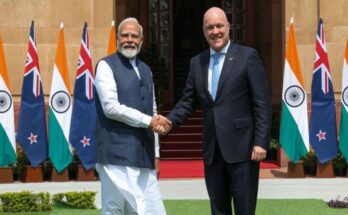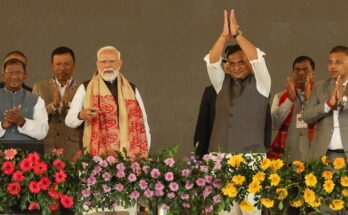New Delhi: In late December, at one of the extensive closed door meetings that the PM has had with various industry vertical heads, a high-profile team representing India’s digital economy outlined with way forward. At the meeting where the PM was most candid asking for real time suggestions to boost growth, he was informed that electronics manufacturing, especially handsets and components, had a good chance of becoming India’s largest exports within the next five years. Industry asked him to follow a path of least resistance.
Sources close to developments revealed to IANS that a special incentive scheme for the manufacture of mobile handsets and components will be unveiled in the Budget to give an additional push to the burgeoning sector.
A Modified Special Incentive Package Scheme (MSIPS) to promote aggressively a 20-odd component manufacturing ecosystem in the country that will go beyond making mobile phones is on the anvil. This will be an overarching policy which goes beyond interest subvention and credit default guarantee and it will be outside the scope of MeitY (Ministry of Electronics and Information Technology) and by an outside department/arm since ministry’s role is that of a policy maker only.
M-SIPS was floated to encourage electronics manufacturing and it ran from 2012 to 2018. It promised multiple incentives for 10 years, including a capital subsidy of 20% in special economic zones (SEZs) and 25% in non-SEZs, and reimbursements of countervailing duty or excise on capital equipment for non-SEZ units.
For some high-capital projects, it also offered reimbursement of Central taxes and duties. The incentives were available for 29 electronic verticals across the manufacturing value chain. The period of benefits was reduced to 5 years from 10 years after it was recalled.
The M-SIPS was created to provide financial incentives across the ESDM (Electronics System Design and Manufacturing) value chain to compensate for cost disability in manufacturing and Electronics Manufacturing Clusters (EMC).
This sector has shown tremendous promise wherein exports have grown from a mere US $200 million three years ago to cross US $2 billion in the year 2019-20 in handsets alone — a 10x growth in 36 months.
One of the most successful stories around Make in India is mobile handset manufacturing with Noida outside Delhi becoming the new hub. The size of the domestic mobile manufacturing industry in FY 2019-20 is expected to be Rs 1,35,000 crore as against Rs 94,000 in FY 2016-17. Already, India, which has second position in the global mobile handsets market, is projected to grow to 302 million units this year.
This meeting was part of a series of industry meetings hosted by the PM at his residence in the run-up to the Union Budget to be announced on February 1. It was attended by Manu Kapoor, Samsung, Virat Bhatia, Apple India, Soumitra Bhattacharya, Bosch Ltd., and Hari Om Rai, Lava. The industry emphasised that India’s potential for electronics exports was unlimited, especially as labour arbitrage and geopolitical issues were helping the tide in India’s direction.
Only two countries – China and Vietnam – export handsets and components, while 198 countries are net importers. India needs to become the third, beating Vietnam first and then grabbing share from China. India currently suffers a 9-12% disability vis-à-vis Vietnam and nearly 18% vis-à-vis China as far as handsets and components manufacturing is concerned.
To move manufacturing, especially for the purposes of exports, the government needs to focus on the competitiveness of the sector. The National Policy on Electronics 2019 (NPE-2019) puts the total handsets market at US $190 billion-US $80 billion domestic and US $110 billion exports by 2025-26.
This dovetails perfectly with PM Modi’s aspirational hobby horse — the ‘Make in India’ programme. In October 2018, at a meeting held in Japan, the PM had declared that, “We are rapidly moving towards being Number One in mobile phone manufacturing”. He had expressed a desire for India becoming a global hub in the field of electronics and automobile manufacturing.
Industry remained hopeful about the steps needed to address India’s disability to move it to the next level of production and exports.
The start-up sector also participated in the meeting. Shashank ND of Practo, TVS Mohandas Pai (formerly Infosys, Manipal) and Saurabh Srivastava, Indian Angel Network represented the issues of start-ups. Primary among their concerns was the ability to get bank finance in India for start-ups. It was decided that a meeting of start-ups with leaders of Indian banks will be held shortly and the way forward will be presented to the PMO for taking action.
The software sector in the meeting was represented by CP Gurnani, Tech Mahindra and Rajesh Gopinath, TCS. Tech Mahindra and TCS are among India’s largest exporters of software and over 90% of their revenues come from international markets, such as US and Europe.




